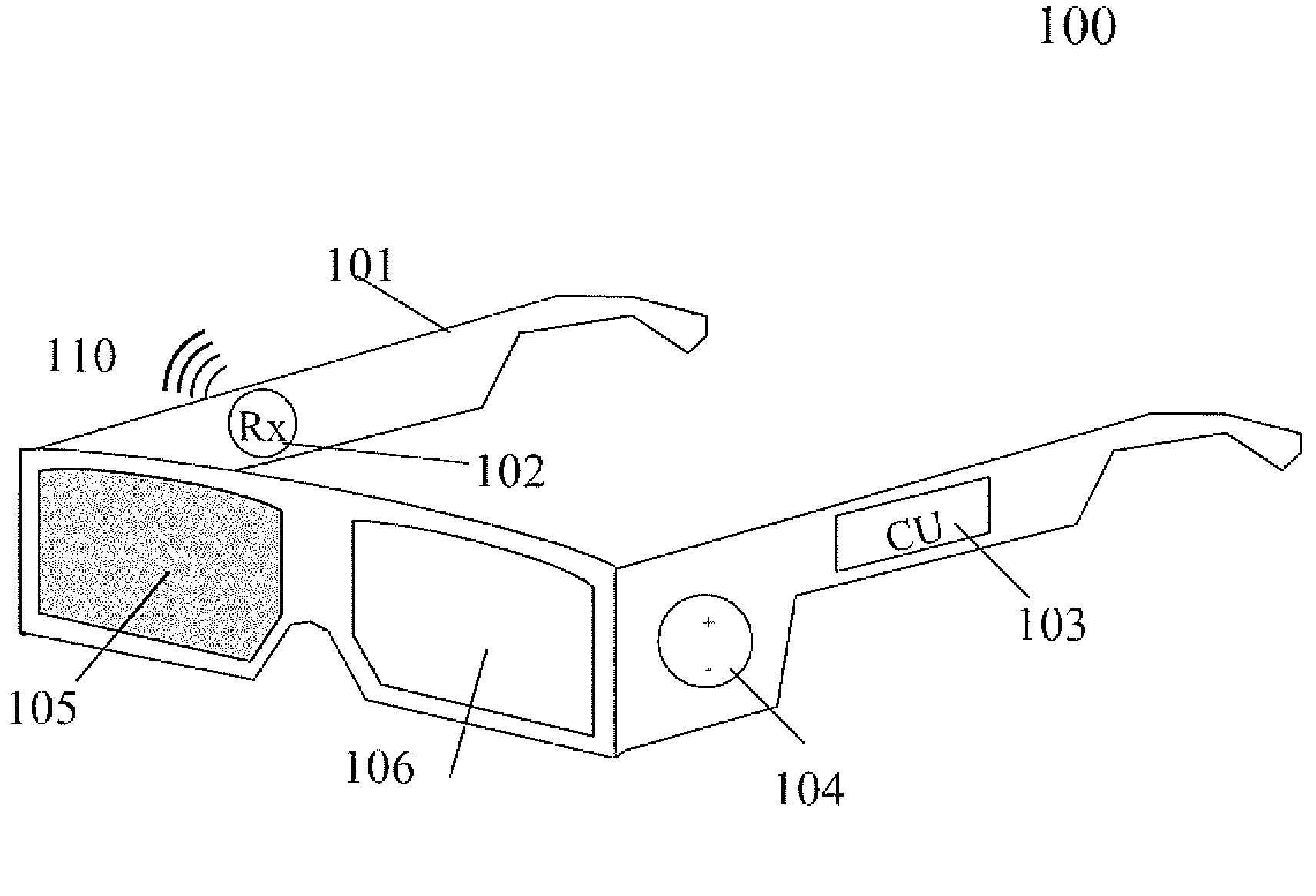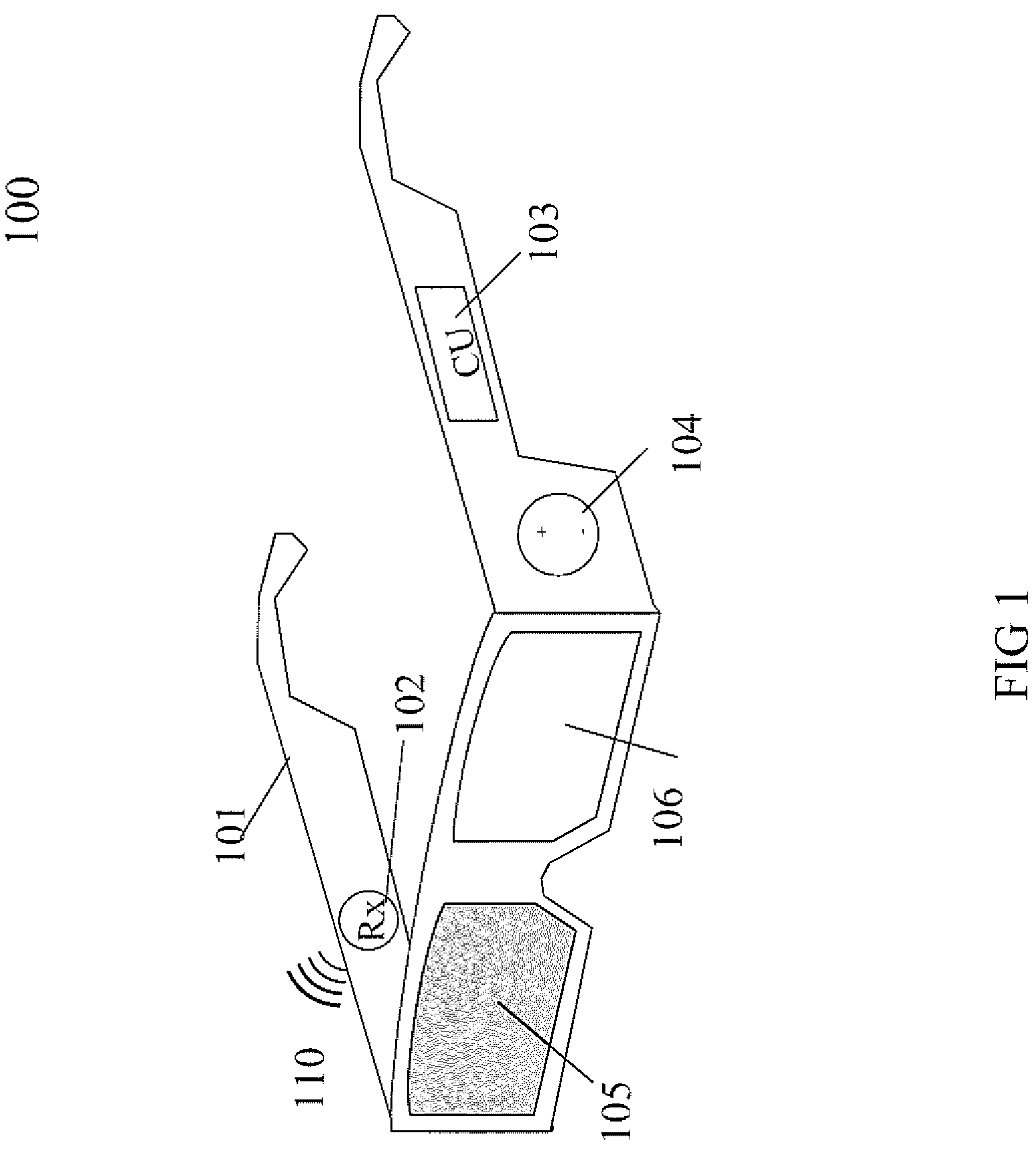Continuous adjustable 3deeps filter spectacles for optimized 3deeps stereoscopic viewing and its control method and means
a technology of stereoscopic viewing and filter spectacles, applied in the field of motion pictures, can solve the problems of a few thousand of a second longer transmission of signals in low light conditions, the fad of 3d movies of the early to mid-1950s however soon faded, and the difficulty and burden of motion picture producers, distributors, tv networks,
- Summary
- Abstract
- Description
- Claims
- Application Information
AI Technical Summary
Benefits of technology
Problems solved by technology
Method used
Image
Examples
first alternate embodiment
A FIRST ALTERNATE EMBODIMENT
[0280]Motion pictures are often viewed on small, personal devices such as an Apple iPod. Such devices have small screens and are held within arms reach for viewing. For such devices the preferred embodiment that optimizes the Optical Density of the neutral density lens to an average inter-ocular distance may be inappropriate. We provide other alternate embodiments, either of which is appropriate for small viewing devices, as well as for TV or movie theater viewing.
[0281]FIG. 8 shows the use of the retinal reaction time curve 210 for a first alternate embodiment algorithm 800 to calculate the optical density of the neutral density lens. The x-axis 201 shows luminance, and the y-axis 203 shows retinal reaction time. Observe that the amount of light produced by a motion picture is constantly changing. Some night scenes in a movie produce low light, and other scenes such on the open seas at noon are much brighter. In this first alternate embodiment, rather ch...
second alternate embodiment
A SECOND ALTERNATE EMBODIMENT
[0285]FIG. 10 uses the typical curve 210 of retinal reaction time 203 as a function of Luminance 201 to demonstrate a second alternate embodiment 1000 for computing an optimal optical densities for the neutral density lens of the Continuous Alternating 3Deeps Filter Spectacles so that the difference (Δ) 1018 in retinal reaction time between the viewer's eyes corresponds to a fixed number of frames of the motion picture.
[0286]In this second alternate embodiment, rather choose an optical density for the neutral filter so that there is a separation of the average inter-ocular distance (2½ inches) between the instant and delayed image to the eye (as in the preferred embodiment), we may choose to have a difference (Δ) 1018 between retinal reaction time chosen so that the instant and lagging image are a fixed number of movie frames. It will be seen that this has some advantages.
[0287]In this example, assume as in FIG. 5 that the luminance 1010 is 0.54. This is...
PUM
 Login to View More
Login to View More Abstract
Description
Claims
Application Information
 Login to View More
Login to View More - R&D
- Intellectual Property
- Life Sciences
- Materials
- Tech Scout
- Unparalleled Data Quality
- Higher Quality Content
- 60% Fewer Hallucinations
Browse by: Latest US Patents, China's latest patents, Technical Efficacy Thesaurus, Application Domain, Technology Topic, Popular Technical Reports.
© 2025 PatSnap. All rights reserved.Legal|Privacy policy|Modern Slavery Act Transparency Statement|Sitemap|About US| Contact US: help@patsnap.com



